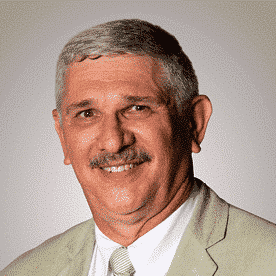
Home » Is Our Core Foundation in Need of Repair?

Anyone who has ever owned a home or any other type of real estate knows that maintenance and updating are a huge part of maintaining and increasing the value of a property. Often, our television sets broadcast commercials about the need to repair failing foundations as they age. Like anything else in life, failing to maintain and improve our property and other assets can often lead to failures.
Look no further than the American business world over the past 250 years and you can see where the constant changes in the world and the inability of companies to adapt has led to the failures and extinction of many very successful businesses from the past. Just compare the Dow Jones index, which the top 30 American companies have made up over the years, and you will find that very few companies have sustained their success over a significant length of time.
Businesses fail, and homes deteriorate and become vacant without proper maintenance. The infrastructure of cities, states, and countries worldwide often fails without appropriate maintenance.
You may be wondering what this has to do with the sport of purebred dogs and the American Kennel Club (AKC).
The very core mission of the AKC is the promotion, preservation, health, and welfare of “purebred dogs.” Based on the very mission statement of the club, the breeding, registration, and promotion of the breeds themselves is the primary foundation on which the AKC built the sport.
Without the breeders and exhibitors, there would be no registrations or breeds to promote and maintain. Therefore, there would also be no shows or types of competitions to encourage participants to share their dogs’ unique qualities and abilities with dog lovers around the world. Each breed has a specific and unique purpose, and many breeds have been bred for centuries to perform a particular task and have become faithful companions to humans, and assist them in their everyday lives.
There was a time not that long ago when owning an AKC-registered dog was a status symbol in American culture. AKC was doing well, and registrations were increasing every year. Likewise, while owning an AKC-registered dog became increasingly popular, especially following World War II, Conformation dog shows, Field Trials, and Obedience Trials also grew in popularity. America’s “Greatest Generation” in the years following the war became more involved in many new ventures outside of the home, and many people became involved in our dog show world.
Through the 1970s and ‘80s, the number of dog shows in the US doubled, and many new clubs were formed to not only sponsor shows but also to introduce the AKC-registered purebred dog to everyone in the community. Clubs became groups of like-minded individuals who worked together by providing educational opportunities through monthly programs on the health and maintenance of their dogs, as well as sharing thoughts and ideas on building breeding programs to improve and advance their breeds for the general public.
Clubs in those days held two shows per year, but they were one-day events, usually on Saturday or Sunday, working in conjunction with another club in a nearby geographic location. These clubs would also host at least one or two AKC-sanctioned “B” matches per year on other weekends, where newer exhibitors could train their new prospects and learn about the sport and the proper ways to show and compete in a relaxed atmosphere. At those matches, puppies gained experience and handlers worked on improving their skills. Matches were also a proving ground and a learning environment for prospective judges and ring stewards to polish their skills. In those days, show entries rarely were less than 1,000 dogs per day, and even many of the sanctioned matches would draw several hundred, and even up to a thousand, dogs.
Another important fact about the shows was that they were all held in the geographical community of the show’s host club, thus providing the local general public with two opportunities a year to attend and meet purebred dog enthusiasts, and see and learn about a breed they might be considering for a family pet.
As the number of clubs grew, and therefore the number of shows was also increasing, the challenge of moving from one show site to another after each show led to the decision to allow clubs to hold back-to-back shows at the same location. Clubs could still only hold two shows a year, but this allowed them to reduce the cost of facilities, judges, and other expenses. That policy has worked well for many years.
There were a few areas where multiple clubs banded together to provide three-day shows at select locations across the country. These were clubs that had often worked together when they held three one-day shows at alternate sites on the same weekend. They would share the venue and expenses, and in some cases were able to provide special attractions and other things that helped to promote the sport and the AKC-registered dog.
In some of the larger metropolitan cities, some of these three-day events were great as public service providers where a large number of spectators would attend. Cities like Cleveland, Chicago, Houston, New York, Portland, and many others also held these shows as “benched shows,” which meant that dogs had to be present for most of the day, and when they were not actually being shown they were required to be on their assigned “bench” where other exhibitors and spectators could see them and talk to their owners about the breeds.
There also came a time in the country when gas prices and other inflationary factors made it difficult for both clubs and exhibitors to be fiscally responsible and maintain their ability to continue hosting and attending shows.
While the back-to-back shows helped everyone financially, there were some clubs and others that thought allowing clubs to “cluster” to four-day shows in exceptional venues would provide even more opportunities for clubs to cut expenses by sharing judging panels and reduced daily venue costs.
Looking back, in my humble opinion, this is when the sport “fell off the rails.”
While there were several exceptional venues throughout the country, these types of locations, which were climate-controlled and well-lit, with room for giant rings, plenty of grooming space with electricity, and sufficient parking for over 100 RVs, trailers, and hundreds of other vehicles, were not available in the majority of the geographic areas of the clubs in smaller communities.
AKC took a position where they started to allow clubs to abandon their home territories to “cluster” at these larger venues. In the majority of these cases, the venues that are now allowing large clusters are really not exceptional. Additionally, by allowing specific venues to host numerous clusters, the sport has lost its ability to introduce the sport to new people in those communities that were left behind when their clubs relocated to another venue.
Because of the growth of clusters, what we experienced was the popping up of many “new clubs” solely for the purpose of becoming a cluster partner to allow for more four- and five-day clusters. The results of these decisions should now be apparent to anyone willing to look at the big picture objectively. With so many shows and clusters, the average shows range from 250 to 800 entries, with very few in the 800 to 1200 range and even fewer in the 1500 range.
So, problem number one is “GREED.” The only people who are really profiting from these changes are the AKC with their charges, the show superintendents, and the professional handlers who can attend all of these clusters.
Who loses? The average exhibitor who is working an actual five-day-a-week job, and additionally, the possible junior handlers of these individuals who attend school during the week and can only be off on Saturday and Sunday as well as the occasional Friday or holiday weekend.
Many owner-handlers complain they don’t want to show on the weekend, especially with their specials, because they feel the professional handlers have an advantage of being seen on Thursday and Friday by the other judges who then (in their opinion) put up the same dogs.
What is the AKC doing about these issues?
We already know that animal rights organizations are constantly attacking us and even suing the AKC over our Standards for some breeds. Governments throughout the world have inserted themselves into our breeding practices with docking and cropping bans as well as breeding and ownership restrictions in some municipalities.
Everywhere you look, designer dogs and mixed breeds are promoted by the media and rescue organizations. The doodle explosion continues. Doodles and “All-American” dogs will continue to be a problem, and AKC is adding to it by allowing them to compete in Performance events. If AKC wants to enable them to compete, change the rules to read that after completing a title on one or even two dogs, those individuals must obtain an AKC-registered dog to continue to compete in AKC events.
The time has come for AKC to use the media to promote purebred dogs and educate the public on all of the positives that come with them. We have so many prominent people and role models within our sport who could put us in a better light with the general public.
It is truly time to revisit the cluster situation. The current system is not helping at all. We have observed a decline in the quality of competition and entries. At the same time, clubs struggle to maintain viability due to higher costs and difficulties in finding sufficient venues at reasonable rates.
Let’s go back to two- or even three-day weekend limits on most clusters. We need to get the average owner-handled family dogs back into our sport. The average family will bring back the atmosphere and camaraderie we have lost, and hopefully introduce more young people to our sport.
Start looking into these clubs that only exist to put on a show. Clubs have a community responsibility to educate and assist people. We need to bring back matches and get club people involved in their communities so that we can stop more legislation before it gets rolling.
Somebody must examine the distance between shows on the same weekend. There are too many shows in proximity to one another. You see handlers driving five to eight hours from one day to the next and then back again to the first show site, and following judges; that is not a good picture.
Although most won’t admit it, our foundation is fractured. By educating the public and encouraging our breeders to breed healthy, well-bred dogs that find their forever homes with the general public, we will again see growth. Breeders need to allow new people access to high-quality dogs and mentor them so that they can succeed.
Through the years, a relatively small number of individuals have often made many decisions that, while some have been beneficial, have been self-serving and driven by their own agendas.
The AKC needs to meet the needs of its constituents, or customers, however you wish to classify them. The AKC is supposed to be “A Club of Clubs,” and while the local and regional kennel clubs themselves are a group of volunteers, the AKC staff is paid. The staff in many areas needs significant improvement in customer relations and responding to the needs of the clubs and their volunteers.
If the AKC and all of us in the sport continue on the current path and bury our heads in the sand, we will go the way of many past great American companies and fade into memory.
The foundation of our sport may be cracking, but some well-meaning and thoughtful hard work can still repair it.
